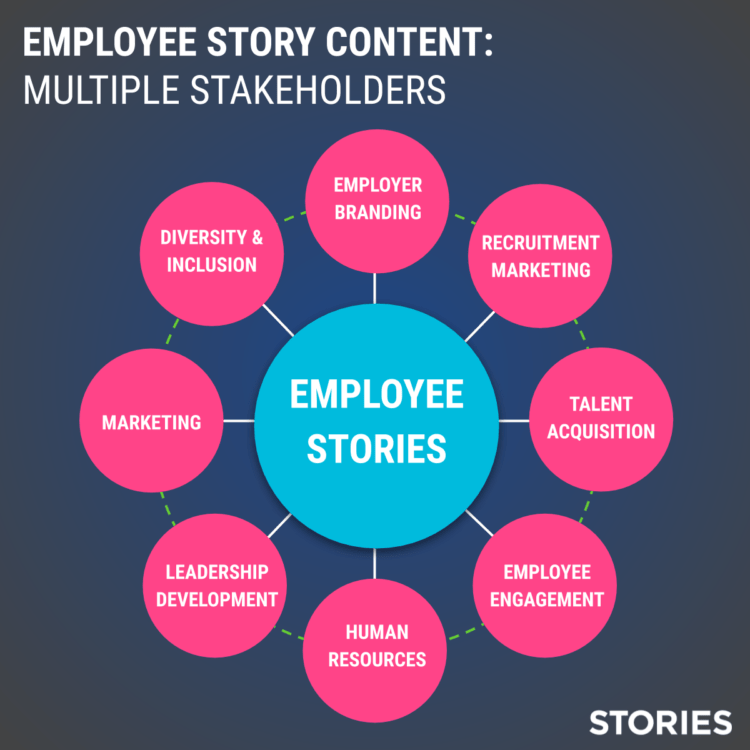Employee stories and investor communications
Stories Inc. cofounder Scott Thompson shares why employee stories and investor communications go hand-in-hand.
Every year at around this time, I keep an eye out for Jeff Bezos’ annual letter to Amazon shareholders. It’s always packed with great takeaways.
One thing that stuck out to me in the recently-published 2020 letter was the sheer amount of it that related to Amazon’s employees—and, more specifically, how Amazon wants to be Earth’s Best Employer and Earth’s Safest Place to Work.
I was curious, so I did a word count of the total shareholder letter and a word count of the parts related to Amazon’s employees: Bezos spent 30.9% of the investor letter talking about Amazon’s current and aspirational employee experience. Why would a company’s investor letter spend so much time talking about employees? Don’t investors only care about profits and stock price? And so wouldn’t investors only want to hear how the company is spending less on its employees? No. All stakeholders — including investors — care about how a company treats its employees.
Putting it another way, companies can and should use employee experience content in all stakeholder channels, including investor communications.
Employee story content in investor communications
Let’s look at a specific example from the investor letter:
“We dive deep into safety issues. For example, about 40% of work-related injuries at Amazon are related to musculoskeletal disorders (MSDs), things like sprains or strains that can be caused by repetitive motions. MSDs are common in the type of work that we do and are more likely to occur during an employee’s first six months. We need to invent solutions to reduce MSDs for new employees, many of whom might be working in a physical role for the first time.
One such program is WorkingWell – which we launched to 859,000 employees at 350 sites across North America and Europe in 2020 – where we coach small groups of employees on body mechanics, proactive wellness, and safety. In addition to reducing workplace injuries, these concepts have a positive impact on regular day-to-day activities outside work.
We’re developing new automated staffing schedules that use sophisticated algorithms to rotate employees among jobs that use different muscle-tendon groups to decrease repetitive motion and help protect employees from MSD risks. This new technology is central to a job rotation program that we’re rolling out throughout 2021.
Our increased attention to early MSD prevention is already achieving results. From 2019 to 2020, overall MSDs decreased by 32%, and MSDs resulting in time away from work decreased by more than half.”
From Stories Inc.’s perspective, the above example checks a lot of the boxes for what makes a compelling employee story:
- It give candidates real insight ✅
- It’s specific ✅
- It inspires action ✅
- It paints a realistic picture of the work environment ✅
- It’s personalized
- It’s personal
- The company is a character ✅
- It connects to culture concepts ✅
Those red Xs would turn into green checks if the story came from the mouth of a frontline employee, especially one that has seen the impact of MSDs first-hand, rather than the CEO/Chairman of the Board/wealthiest person in the world. But otherwise, it’s a good example of employee experience content. I particularly love that it’s realistic about the challenges and dangers involved in the type of work done at Amazon and how it gives specific examples that show how the company is solving this issue.
Content should live at the heart of an organization
If they haven’t already, Amazon should get an employee’s perspective on Amazon’s MSD prevention efforts and package it up into a digestible piece of story content — either in video or blog form. That story can then be shared with all of Amazon’s stakeholders: employees, customers, investors, suppliers, and third-party sellers. There are hundreds or thousands of people at Amazon who are responsible for the many channels for communicating with those various stakeholders, and I can guarantee that those people are starved for compelling content to share in their respective channels. Put story content at the heart of your organization to keep all stakeholders aligned with your vision, mission, and culture.
- Employee stories are content assets
- Help candidates self-select with a unique company mission
- Align with mission for your employer brand
Interested in capturing stories from your team members?
Image by Daniel Oberhaus via Flickr Creative Commons


